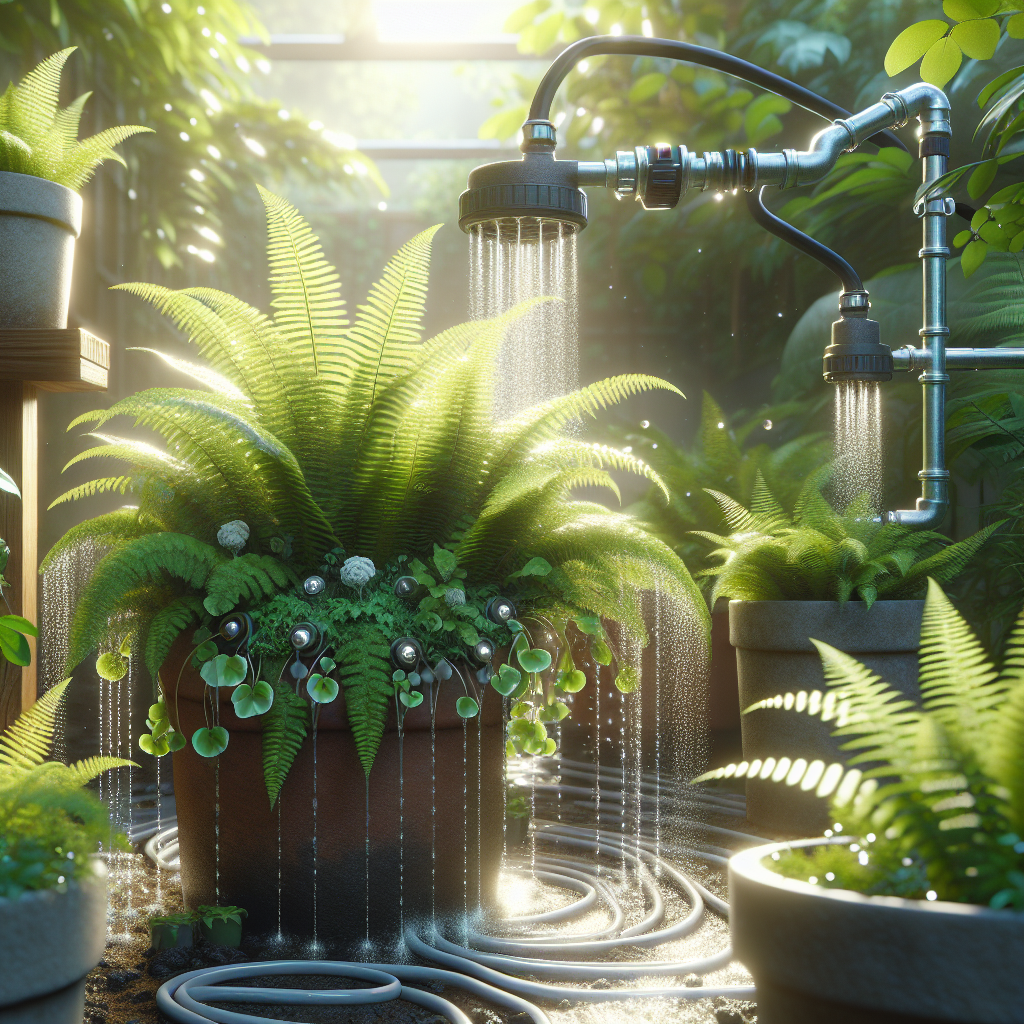Table of Contents
Ferns are beloved houseplants known for their lush green foliage and graceful fronds. However, growing ferns in containers can be a challenge, especially when it comes to watering. Traditional watering methods, such as overhead watering or manual watering, can lead to uneven moisture levels in the soil and increase the risk of root rot. This is where slow drip irrigation comes in as a game-changer for ferns in containers.
Slow drip irrigation is a method of delivering water directly to the roots of plants at a slow and steady rate. This allows for more efficient water absorption and reduces water waste through evaporation or runoff. For ferns in containers, this means consistent moisture levels in the soil, promoting healthy root growth and vibrant foliage. In this article, we will explore why slow drip irrigation is the perfect solution for keeping your ferns happy and thriving.
The Benefits of Slow Drip Irrigation for Ferns
1. Consistent Moisture Levels: One of the key benefits of slow drip irrigation for ferns is that it helps maintain consistent moisture levels in the soil. Ferns thrive in moist conditions but are sensitive to overwatering, which can lead to root rot. With slow drip irrigation, water is delivered directly to the roots, ensuring that the soil remains evenly moist without becoming waterlogged.
2. Prevents Water Runoff: Traditional watering methods can sometimes result in water runoff, especially if you have shallow containers or fast-draining soil. This not only wastes water but also deprives your ferns of much-needed hydration. Slow drip irrigation delivers water slowly and evenly, allowing it to penetrate deep into the soil before reaching saturation point.
3. Promotes Healthy Root Growth: By delivering water directly to the roots at a slow pace, slow drip irrigation encourages ferns to develop strong and healthy root systems. This enables them to better absorb nutrients from the soil and anchor themselves firmly in their containers. Healthy roots lead to healthy plants with lush foliage.
How to Set Up Slow Drip Irrigation for Ferns
To implement slow drip irrigation for your ferns in containers, you will need a few basic supplies:
- A perforated soaker hose or drip tubing
- A timer or dripper system
- A watering wand or hose attachment
- Mulch or pebbles to cover the tubing
Start by laying out your soaker hose or drip tubing along the surface of the soil around your ferns. Make sure it reaches all areas of the container before securing it with stakes or clips. Connect one end of the tubing to a timer or dripper system attached to your outdoor faucet.
Set up a watering schedule based on your fern’s needs – typically once a day for most varieties – and adjust as needed depending on environmental factors like temperature and humidity. Finally, cover the tubing with mulch or pebbles to camouflage it and retain moisture in the soil.
Tips for Successful Slow Drip Irrigation
To ensure that your ferns thrive with slow drip irrigation, keep these tips in mind:
- Monitor moisture levels regularly by checking the dampness of the soil around your plants.
- Adjust your watering schedule seasonally based on changes in temperature and sunlight exposure.
- Clean out any clogs or debris from your soaker hose or tubing periodically to maintain efficient water flow.
- Avoid overwatering by setting up a timer system that delivers just enough water without saturating the soil.
Frequently Asked Questions (FAQ)
Q: Can I use slow drip irrigation indoors for my potted ferns?
A: Yes, you can set up indoor slow drip irrigation systems using self-watering pots with built-in reservoirs or adjustable dripper systems.
Q: How do I know if my fern needs more water with slow drip irrigation?
A: Check the moisture level of the soil regularly by sticking your finger into it – if it feels dry an inch below the surface, it’s time to water.
Q: Can I mix fertilizer with my slow drip irrigation system?
A: Yes, you can add liquid fertilizer to your watering routine by diluting it according to package instructions and incorporating it into your regular watering schedule.
By implementing slow drip irrigation for your potted ferns, you can ensure they receive just the right amount of hydration while minimizing waste – ultimately leading to healthier plants with lush green foliage that will thrive year-round!













